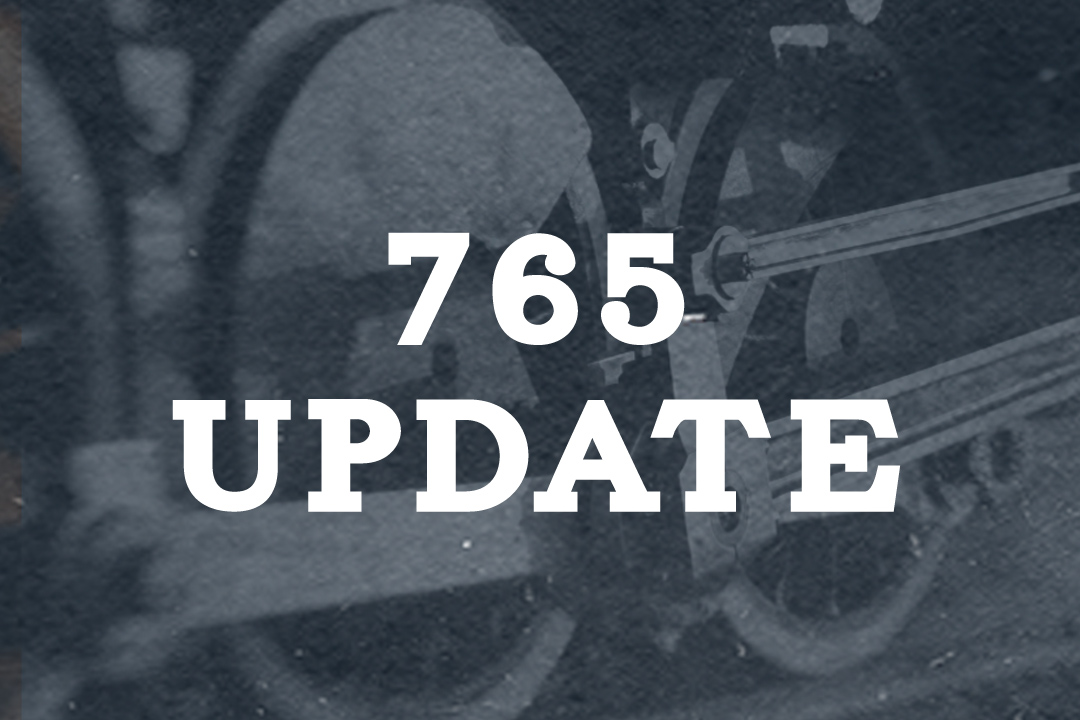Submitted by Steve Winicker.
LAST WEEKENDS SHOP ACTIVITY
The 765 is full of water after the weekend. The hydro pump is hooked up and we are beginning the process of chasing leaks we find. Fortunately, so far not many have been noted but we will be pressure testing the locomotive later this week.
Since filling the steam engine with water is a slow process work on other projects such as the box car and open-air car were moved along. The brake cylinders on the 358 were cleaned and are ready to go back together soon. Jerrad has the crane boom on, and the clutches tuned up so the truck crane is getting close to being operational.
UPCOMING ACTIVITIES
This week the engine will get some pressure testing and depending on the results any defects will be followed up on over the next few weeks.
SAFETY SENSE
Each year in the United States 76 million cases of food borne illness occur, more than 325,000 people are hospitalized for food borne illness and 5,000 people will die from food borne illness.
Recently, Salmonella, Listeria and other food borne bacterium that have been found in our food supply in items like tomatoes and other fresh vegetables. The Dole company found Listeria in their line of prepackaged salad which resulted in a nationwide product recall. These are typically rare cases.
Food handling safety risks at home are more common than most people think. You are much more likely to become sick from improper food handling procedures at home than you are at a restaurant, from a grower or the supply chain. Improper storage or handling can cause bacteria to grow.
The four easy lessons of Clean, Separate, Cook, and Chill can help prevent harmful bacteria from making you and your family sick.
- Clean…Wash hands, utensils, and cutting boards before and after contact with raw meat, poultry, seafood, and eggs. Wash all fresh vegs before preparing them for use.
- Separate…Keep raw meat and poultry apart from foods that won’t be cooked. Ideally, use one cutting board for raw meat, poultry, and seafood and another for salads and ready-to-eat food. Cross-contamination is how bacteria spreads
- Cook… Use a food thermometer to assure the proper prescribed food internal temperature has been reached. You can’t tell if food is cooked safely by how it looks.
- Chill…Chill leftovers and takeout foods within 2 hours and keep the fridge at 40 °F or below. Bacteria spreads fastest at temperatures between 40 °F – 140 °F, so chilling food properly is one of the most effective ways to reduce the risk of food borne illness.
o Cool the fridge to 40 °F or below, and use an appliance thermometer to check the temperature if there is any question regarding the temperature of the refrigerator.
o Divide food into shallow containers for rapid cooling.
o Thaw meat, poultry, and seafood in the fridge, not on the counter, and don’t over-stuff the fridge.
Bacteria spreads fastest at temperatures between 40 °F – 140 °F, so chilling food properly is one of the most effective ways to reduce the risk of food borne illness. The four easy lessons of Clean, Separate, Cook, and Chill can help prevent harmful bacteria from making you and your family sick.


